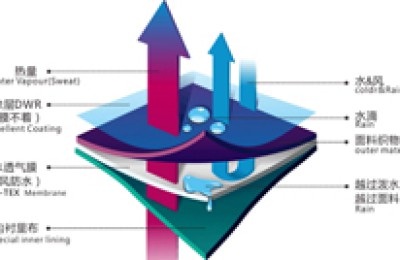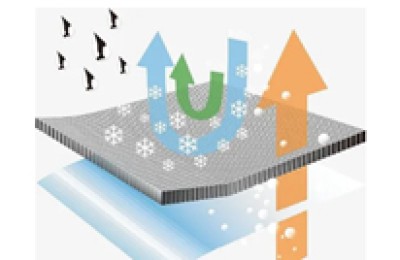Recently, the State Council issued the “Guiding Opinions on Promoting International Cooperation in Production Capacity and Equipment Manufacturing” (referred to as the “Guiding Opinions”), calling for accelerating the “going out” of my country’s major equipment and advantageous production capabilities. Among them, 12 industries including light textiles are listed as key industries for international production capacity and equipment manufacturing cooperation. The National Development and Reform Commission also held a press conference to interpret the “Guiding Opinions” and stated that it would work with relevant departments to implement the work and accelerate international cooperation in production capacity and equipment manufacturing to achieve substantial results.
The promulgation of the “Guiding Opinions” will undoubtedly create a smoother environment for “Made in China” to go overseas. What practical significance and effect does it have on the “going out” of textile machinery equipment? Relevant textile machinery companies said in an interview with a reporter from China Textile News that the “Guiding Opinions” are very consistent with the needs of the current development of the textile machinery industry. At present, the main difficulty encountered by textile machinery equipment in “going out” is financing. It is hoped that the financial and other support measures mentioned in the “Guiding Opinions” can be implemented as soon as possible.
In recent years, my country’s textile machinery equipment technology and quality levels have made great progress, and its international competitiveness has continued to increase; the rapid development of the textile industry in ASEAN countries has also provided market opportunities for my country’s textile machinery exports. Since most textile machinery companies in ASEAN countries can only produce relatively simple textile machinery, most mid- to high-end textile machinery equipment needs to be imported to meet demand. Although the equipment in Japan, Germany, Italy and other developed countries for textile machinery production is advanced, it is expensive and most companies cannot afford it. Textile machinery products from China and India are of high quality and low price. In particular, China’s textile machinery equipment has a complete range of categories, high cost performance and low maintenance costs, making it easier to be accepted by local companies.
As the transfer of the textile industry to Southeast Asia and other regions accelerates and domestic textile companies accelerate their international layout, my country’s textile machinery equipment is facing greater opportunities to “go global.” In the past two years, the domestic market situation of my country’s textile machinery has been adjusted, but the export market has become a bright spot. In 2014, my country exported a total of US$3.148 billion in textile machinery to 177 countries and regions, a year-on-year increase of 24.64%. From January to March this year, my country’s textile machinery exports were US$759 million, a year-on-year increase of 15.33%. The top five overseas markets in terms of export value were India, Bangladesh, Vietnam, Indonesia and Pakistan.
As the competitiveness of the textile industry in Southeast Asian countries further increases, my country’s textile machinery exports to these countries and regions will still have great growth potential. However, “market but lack of funds” is still the main problem currently plaguing my country’s “going out” strategy of textile machinery equipment. According to the relevant person in charge of China Textile Machinery and Technology Import and Export Co., Ltd., textile companies usually require huge amounts of funds to purchase textile machinery equipment, especially complete sets of equipment, and must obtain bank loans. However, compared with some foreign competitors, the supporting financing conditions provided by Chinese textile machinery companies are much worse: not only the loan interest rate is high, but also the term is short – generally only two years, while textile projects usually have a longer investment return cycle, which takes 5 years. ~7 years, which means that textile companies generally need a longer loan period when purchasing equipment. In addition, the relevant loan conditions are harsh, and many foreign textile machinery users are small and medium-sized private enterprises, which are difficult to meet the requirements; in terms of credit insurance and other aspects, user companies also need to bear higher costs. As a result, the international competitiveness of China’s textile machinery equipment has been greatly weakened.
In fact, financing problems are a common problem encountered by enterprises in the process of “going global”. Therefore, the “Guiding Opinions” proposes to improve fiscal and taxation support policies, increase financial support, give full play to the positive role of RMB internationalization, expand sources of financing funds, strengthen and improve export credit insurance, strengthen service guarantees and risk prevention and control, and provide enterprises with “a better future”. Go out” to provide support and services.
Gu Dawei, director of the Foreign Investment Department of the National Development and Reform Commission, also said that various financial supports will be provided, including policy finance, development finance, commercial finance and preferential loans, to systematically support enterprises in “going global”. Relevant financial institutions will formulate specific implementation measures under the “Guiding Opinions”, and relevant measures will be implemented in the next step. Various Chinese-funded financial institutions must also speed up their “going global” efforts and establish overseas outlets to provide convenient financial services for Chinese enterprises to “go global”.
On the other hand, fluctuations in the currency exchange rates of relevant countries will also have an impact on the “going out” of textile machinery equipment. For example, the Indonesian rupiah began to depreciate significantly in 2013 and has now fallen by approximately 25%. This means that companies spend 25% more on purchasing new equipment than they did in the previous two years. In this regard, the “Guiding Opinions” proposes to accelerate the establishment of a cross-border RMB payment system and improve the global RMB clearing system. On the one hand, this is the need for the internationalization of the RMB, and on the other hand, it is also one of the necessary measures to support the “going global” of Chinese enterprises. .
The relevant person in charge of China Textile Machinery and Technology Import and Export Co., Ltd. believes that if financial services that meet the needs of textile machinery users can be provided, China’s textile machinery equipment “going global” will “give wings”. The industry is eager to see relevant national support measures as soon as possible. Refinement and implementation.
Textile machinery equipment “going out” needs to break the financing bottleneck
Recently, the State Council issued the “Guiding Opinions on Promoting International Cooperation in Production Capacity and Equipment Manufacturing” (referred to as the “Guiding Opinions”…
This article is from the Internet, does not represent Composite Fabric,bonded Fabric,Lamination Fabric position, reproduced please specify the source.https://www.yjtextile.com/archives/12192



